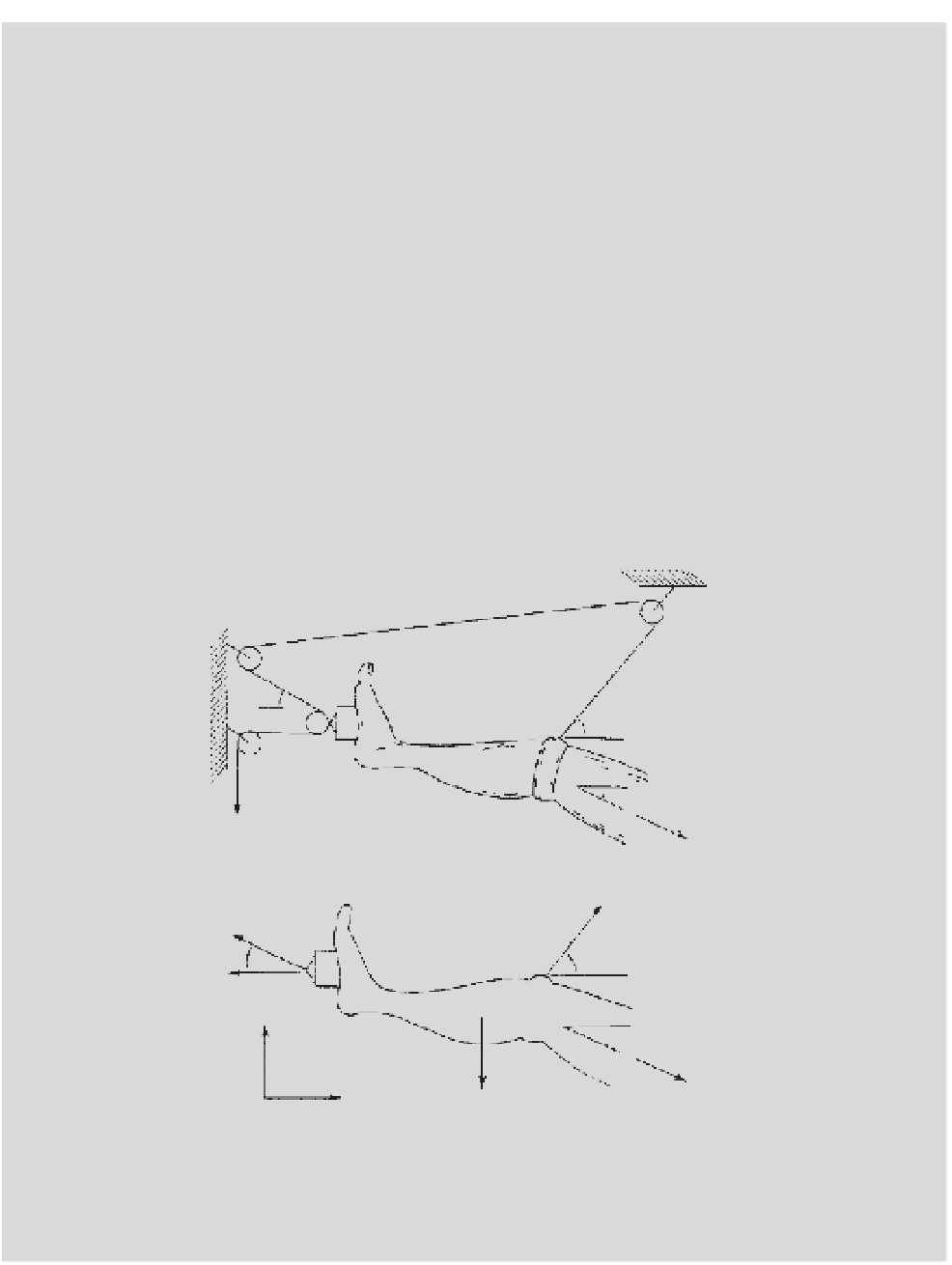Biomedical Engineering Reference
In-Depth Information
EXAMPLE PROBLEM 4.5
Figure 4.10 (top) shows a Russell's traction rig used to apply an axial tensile force to a fractured
femur for immobilization. (a) What magnitude weight
must be suspended from the free end of
the cable to maintain the leg in static equilibrium? (b) Compute the average tensile force applied
to the thigh under these conditions.
w
Solution
The free-body diagram for this system is shown in the lower panel of Figure 4.10. If the pulleys are
assumed frictionless and of small radius, the cable tension
T
is constant throughout. Using Eq. (4.35),
F
1
þ
F
2
þ
F
3
þ
F
femur
mg
j
¼
0
Writing each force in vector form,
F
1
¼
F
1
i
¼
T
i
¼ð
F
2
cos 30
Þ
þð
F
2
sin 30
Þ
F
2
i
j
cos 30
Þ
i
þð
T
sin 30
Þ
j
¼ð
T
¼ð
F
3
cos 40
Þ
i
þð
F
3
sin 40
Þ
j
¼ð
T
F
3
cos 40
Þ
sin 40
Þ
i
þð
T
j
F
femur
¼ð
F
femur
cos 20
Þ
¼ð
F
femur
sin 20
Þ
i
j
30
A
40
B
w
20
F
femur
F
3
F
2
40
30
B
F
1
A
y
20
F
femur
x
mg
= 0.061
w
= 9.2 Ib
FIGURE 4.10
(Top) Russell's traction mechanism for clinically loading lower-extremity limbs. (Bottom)
Free-body diagram of the leg in traction.
Adapted from [5].
Continued

